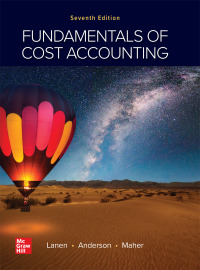Leland Pharmaceuticals develops both over-the-counter (OTC) and prescription medicines. It is organized into two divisions, which are
Question:
Leland Pharmaceuticals develops both over-the-counter (OTC) and prescription medicines. It is organized into two divisions, which are evaluated as investment centers. The cost of capital used in evaluating the divisions is 9 percent.
A local engineering firm has developed and patented a process that significantly shortens packaging times and costs. The engineering firm has offered to either sell the patent to Leland’s OTC Division or lease the exclusive rights to the process. (The process is not usable in the Prescription Division). The lease (and the estimated economic life of the process) is eight years. If purchased, the technology would cost $4.0 million. An eight-year lease would require annual payments of $900,000.
The division manager of OTC estimates that annual income using the process (before considering any depreciation or lease payments) would be $8 million. The investment for OTC (before considering any impact from the new technology) is $50 million.
Assume that the patent would be amortized on a straight-line basis if purchased. Ignore any income tax effects.
Required
a. Suppose the manager of OTC is evaluated using return on investment (ROI). Will the manager prefer to lease or purchase the technology?
b. Suppose the manager of OTC is evaluated using residual income. Will the manager prefer to lease or purchase the technology?
c. Suppose the manager of OTC is evaluated using return on investment (ROI). What is the lease payment that would make the manager indifferent between leasing and purchasing the technology?
d. Suppose the manager of OTC is evaluated using residual income. What is the lease payment that would make the manager indifferent between leasing and purchasing the technology?
Step by Step Answer:






